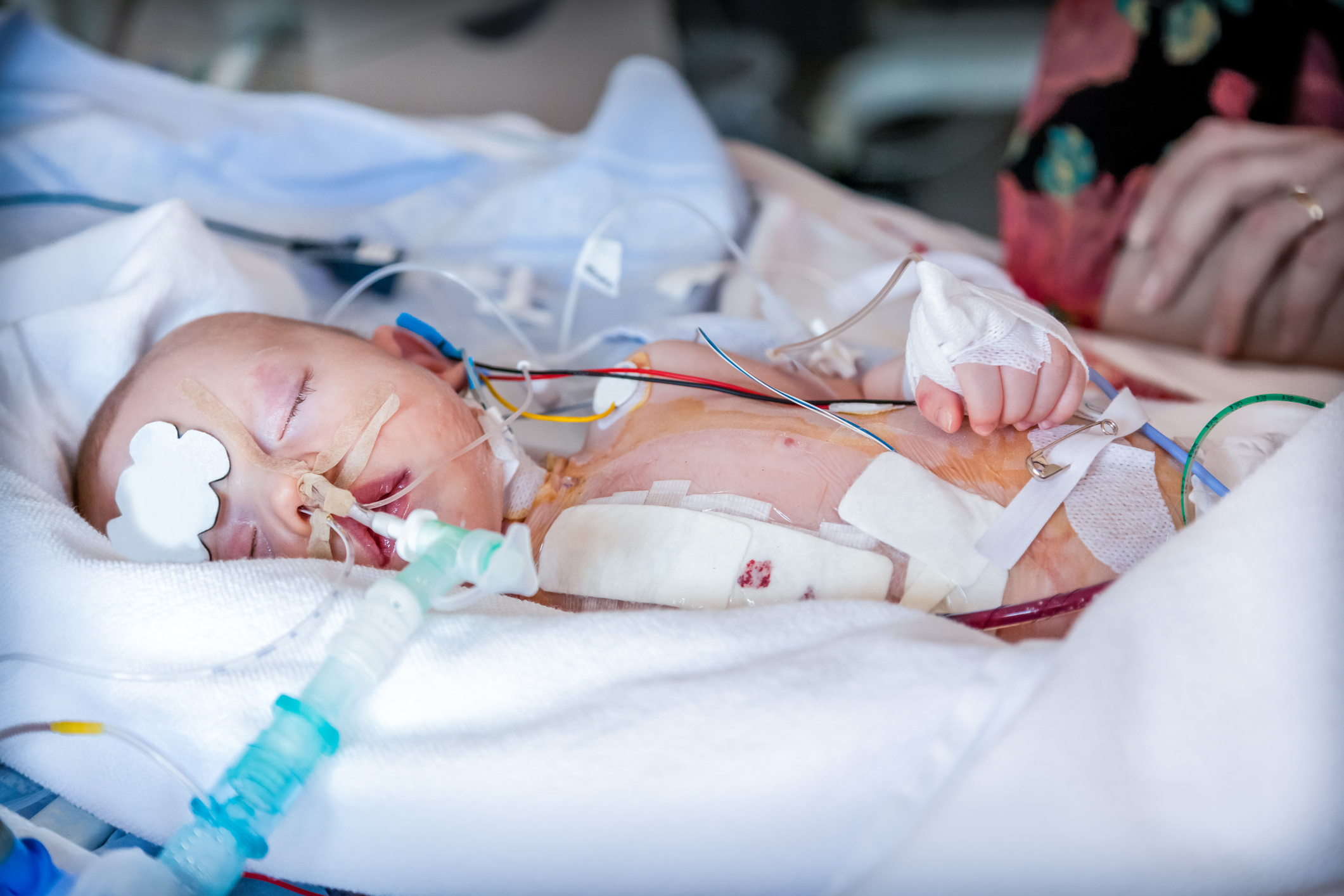
A Broken Heart: Hypoplastic Left Heart Syndrome Part 2
Medical Management and Second Stage Repair
Unfortunately, hypoplastic left heart syndrome (HLHS) cannot be “cured” but must be palliated in such a way that the right side of the heart takes over the function of the nonexistent or severely deformed left heart. In the first article on HLHS, we discussed the Norwood stage I procedure. The goal of the Norwood stage I was to balance the pulmonary to systemic circulation and provide adequate cardiac output for tissue perfusion and oxygenation. The Norwood stage II, also known as a bi-directional Glenn or Hemi-Fontan, will be needed by 4 to 5 months of age (Beke, 2016; Department of Surgery at the University of California San Francisco, 2016).
To decrease mortality and morbidity and ensure stronger right ventricular function the postop care of the HLHS patient must include strategies to optimize pulmonary and systemic perfusion and maximize cardiac output.
One concern after stage 1 surgery is over-perfusion/excessive pulmonary blood flow from the modified Blalock-Taussig shunt. Strategies to help prevent over perfusion include respiratory acidosis, decreasing minute ventilation, and decreasing the fraction of inspired oxygen (FIO2). The goal of these strategies is to decrease pulmonary vascular resistance. It is important to avoid pulmonary venous desaturation which will result in pulmonary desaturation and increased pulmonary vascular resistance. While these strategies are important they must be balanced with increased cardiac output. Treating pulmonary vascular resistance only may result in increased risk for cardiac arrest and early mortality (Beke, 2016; Department of Surgery at the University of California San Francisco, 2016).
Low cardiac output, increased systemic vascular resistance (SVR), and myocardial dysfunction are common after stage I surgery. To increase cardiac output SVR must be manipulated. It is imperative to decrease SVR during the postoperative period. Systemic vascular resistance may be decreased with the use of medications such as milrinone, sodium nitroprusside, phentolamine, and phenoxybenzamine. In some cases, to balance the offloading effects of these drugs, inotropes may be indicated. Inotropes include dopamine, epinephrine, and vasopressin (Beke, 2016; Department of Surgery at the University of California San Francisco, 2016).
The nurse is an essential component of postop care. Nursing interventions include a thorough assessment, providing adequate analgesia and sedation, avoiding hyperventilation, avoiding hypothermia, which increases PVR and SVR and interferes with clotting; and hyperthermia, which increases metabolic demand, increasing myocardial work and oxygen consumption.
Additionally, the nurse should be vigilant for signs of inadequate systemic perfusion and low cardiac output; which may indicate a worsening in clinical status. Managing tachycardia, hypotension, decreased urine output, inadequate systemic perfusion, elevated temperature, low mixed venous oxygen saturation, metabolic acidosis, and increased serum levels of lactate have been related to better outcomes and decrease mortality (Beke, 2016; Department of Surgery at the University of California San Francisco, 2016).
If the shunt should become occluded, extracorporeal membrane oxygenation (ECMO), interventional cardiac catheterization to remove the occlusion, or additional surgery to replace the shunt may be indicated.
When the child is approximately five months of age the Norwood stage II operation occurs. If the Norwood stage II is successful and the right heart has begun to function as the left ventricle, the amount of pressure required to move blood through the lungs is decreased.
The Norwood stage II consists of disconnecting the Blalock-Taussig shunt and connecting the right pulmonary artery directly to the superior vena cava. This procedure is called a Hemi-Fontan or bidirectional Glenn. By connecting the pulmonary artery to the superior vena cava, half of the unoxygenated blood bypasses the right ventricle and passively enters the lungs thus reducing the volume load of the right ventricle.
Postoperatively, post Glenn patients are at risk for pleural effusions, cyanosis, and hypertension. These patients should be extubated at the earliest opportunity as spontaneous breathing is best for optimizing hemodynamics. The pleural effusions may require long-term chest tube drainage and dietary modifications; and are the most common cause of prolonged hospital stays (Beke, 2016; Department of Surgery at the University of California San Francisco, 2016).
The complex nature of HLHS requires a multi-stage palliative repair. It is essential that nurses and other healthcare providers understand how the surgical interventions impact the patient's cardiac anatomy, cardiac output, systemic blood flow, and perfusion. In part three we will discuss the Norwood stage III and cardiac transplant as treatment modalities for HLHS.
References
Beke, D. (2016). Norwood procedure for palliation of hypoplastic left heart syndrome: Right ventricle to pulmonary artery conduit vs modified Blalock-Taussig shunt. Critical Care Nurse; 36:6, pp. 42-51. Retrieved from: Norwood procedure for palliation of hypoplastic left heart syndrome
Department of Surgery at the University of California San Francisco. (2016). Norwood procedure. Retrieved from: Department of Surgery at the University of California San Francisco.




